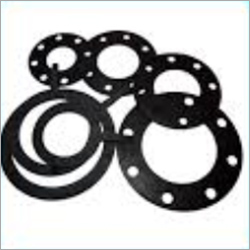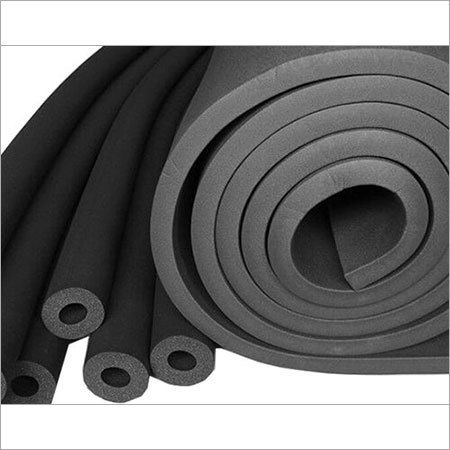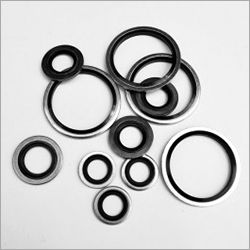

Rubber Seal
Product Details:
- Size Different Available
- Color Black
- Usage Industrial
- Material Rubber
- Click to view more
X
Rubber Seal Price And Quantity
- 10 Piece
Rubber Seal Product Specifications
- Industrial
- Rubber
- Different Available
- Black
Rubber Seal Trade Information
- 100 Piece Per Day
- 8-10 Days
Product Description
A rubber seal is a type of sealing material made from rubber or other elastomeric materials that are used to prevent leaks or contamination in various applications. Rubber seals are commonly used in industries such as automotive, construction, and aerospace, among others. They are typically used in applications where there is a need to prevent the passage of liquids or gases between two surfaces, such as between a door and a car frame or between pipes in a plumbing system.
Rubber seals can be made in different shapes and sizes to suit various applications, and they are often designed to be flexible, durable, and resistant to wear and tear. They can also be customized with specific features, such as chemical resistance or heat resistance, depending on the requirements of the application.
Rubber seals are an important component in many mechanical systems, and they play a critical role in ensuring the safety and reliability of those systems.
Rubber Seal Features:
Rubber seals have a number of important features that make them ideal for various sealing applications. Some of the key features of rubber seals include:
1. Flexibility: Rubber seals are typically made from elastomeric materials that are highly flexible, allowing them to conform to the shape of the surfaces they are sealing.
2. Durability: Rubber seals are designed to be highly durable and resistant to wear and tear, making them suitable for use in harsh environments and in applications where they are exposed to constant stress.
3. Chemical resistance: Rubber seals can be formulated with specific materials that provide resistance to chemicals and other corrosive substances, making them ideal for use in applications where exposure to these substances is common.
4. Heat resistance: Some rubber seals are formulated with materials that provide resistance to high temperatures, allowing them to be used in applications where they are exposed to extreme heat.
5. Water resistance: Rubber seals can also be formulated with materials that provide resistance to water and other liquids, making them ideal for use in applications where water is present.
6. Compression set resistance: This feature ensures that the seal remains in its intended shape and size over time, even under repeated compression and expansion cycles.
7. Excellent sealing properties: Rubber seals are designed to provide an effective and reliable seal, preventing the passage of fluids, gases, and other contaminants between surfaces.
Overall, rubber seals are an important component in many different industries and applications, thanks to their flexibility, durability, and excellent sealing properties.
Rubber Seal Applications:
Rubber seals are used in a wide range of applications across many different industries. Some common applications of rubber seals include:
1. Automotive industry: Rubber seals are widely used in the automotive industry for sealing doors, windows, sunroofs, hoods, trunks, and other components. They also play a crucial role in engine and transmission systems, helping to prevent leaks and contamination.
2. Construction industry: Rubber seals are used in the construction industry for sealing windows, doors, and other openings in buildings. They also play an important role in sealing joints in roofing systems, preventing leaks and water damage.
3. Aerospace industry: Rubber seals are used in the aerospace industry for sealing aircraft doors, windows, hatches, and other components. They help to maintain the integrity of the aircraft cabin and protect against changes in air pressure and temperature.
4. Plumbing industry: Rubber seals are used in the plumbing industry for sealing pipes and fittings, preventing leaks and ensuring the efficient flow of water and other liquids.
5. Medical industry: Rubber seals are used in the medical industry for sealing medical devices and equipment, helping to prevent contamination and maintain sterility.
6. Electronics industry: Rubber seals are used in the electronics industry for sealing electronic components and protecting them from moisture and other contaminants.
Overall, rubber seals play an important role in many different industries and applications, helping to ensure the safety, reliability, and efficiency of various systems and components.
Frequently Asked Questions:
1. What are rubber seals made of?
Ans: Rubber seals can be made from a variety of elastomeric materials, including natural rubber, synthetic rubber, silicone rubber, and fluorocarbon rubber, among others.
2. What is the purpose of rubber seals?
Ans: The purpose of rubber seals is to prevent the passage of liquids, gases, and other contaminants between two surfaces, such as between a door and a car frame or between pipes in a plumbing system.
3. What are the different types of rubber seals?
Ans: Rubber seals can be classified into different types based on their shape, size, and intended use. Some common types of rubber seals include o-rings, gaskets, weatherstripping, and mechanical seals.
4. How do you install a rubber seal?
Ans: The installation process for rubber seals can vary depending on the type of seal and the application. Generally, rubber seals are installed by pressing or fitting them into place, or by using adhesive or other fastening methods.
5. How long do rubber seals last?
Ans: The lifespan of rubber seals can vary depending on the material, the application, and the environmental conditions. Generally, rubber seals are designed to be durable and long-lasting, and can often last for several years with proper maintenance.
6. How do you maintain rubber seals?
Ans: To maintain rubber seals, it is important to keep them clean and free of debris or other contaminants. Regular inspection and lubrication can also help to ensure that the seals remain in good condition and continue to function effectively.
Tell us about your requirement

Price:
Quantity
Select Unit
- 50
- 100
- 200
- 250
- 500
- 1000+
Additional detail
Mobile number
Email

 English
English Spanish
Spanish French
French German
German Italian
Italian Chinese (Simplified)
Chinese (Simplified) Japanese
Japanese Korean
Korean Arabic
Arabic Portuguese
Portuguese Send SMS
Send SMS Send Inquiry
Send Inquiry


